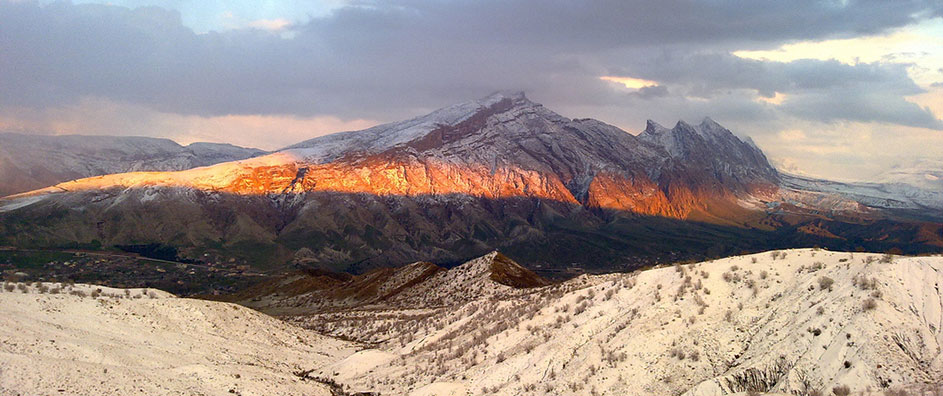In examining the rich tapestry of Bahá’í teachings, one finds profound narratives that illuminate the human condition, offering transformative insights. Among these narratives, the figure of the Exiled Prophet, who finds solace in a cave amidst the mountains, serves as a compelling metaphor for spiritual growth and resilience. This exploration reveals not only the historical context of such figures but also the universal lessons derived from their experiences. The interplay of exile and enlightenment prompts a profound shift in perspective, inviting one to delve deeper into the manifold layers of meaning contained within this tale.
The narrative of the Exiled Prophet poignantly underscores the theme of spiritual testing. Exile, in its various manifestations, often serves as a crucible for personal development. The mountains represent not merely a physical locale but rather a psychological landscape where trials forge the character. In the annals of religious history, many prophets and leaders have faced similar forms of exile—often a prelude to transformative revelations or mission fulfillment. This notion invites contemplation on the inherent value of adversity, suggesting that through trials, individuals may awaken to profound truths previously obscured by comfort or complacency.
In a broader context, the concept of a cave holds significant symbolic weight. Within the confines of such a space, one might encounter solitude—a necessary journey into the self. This introspective voyage compels one to confront the depths of the human spirit. Within the Bahá’í framework, the cave is emblematic of a sanctuary, a refuge from worldly distractions where enlightenment can occur. The cave’s seclusion fosters a conducive atmosphere for contemplation, engendering clarity of thought and purpose.
Moreover, the metaphor of mountains encompasses both challenge and elevation. The arduous climb serves as a metaphor for the ascent toward spiritual enlightenment. Mountains symbolize the obstacles one must overcome, encapsulating the journey of countless individuals seeking greater understanding and purpose amidst life’s vicissitudes. This metaphorical elevation is not solely a physical journey but also a mental and spiritual ascendancy, suggesting that through the trials of life, individuals can attain higher levels of consciousness.
The narrative also engenders curiosity about the nature of divine revelation. It raises pivotal questions regarding the transmission of spiritual truths. How does one receive profound insights while isolated from societal norms? Such solitude can facilitate a clearer channel for divine inspiration. The Bahá’í teachings emphasize that the direct experience of the divine is attainable in seclusion, where distractions dissipate, and the mind can focus on higher realities. This assertion challenges conventional notions regarding the communal aspects of spirituality, positing that individual experiences are equally valid and vital for the broader understanding of divine messages.
Furthermore, the idea of being exiled extends beyond the geographic— it invites introspection on emotional and psychological exile. Many individuals may find themselves alienated from their own identity or purpose. Thus, the path of the Exiled Prophet resonates with those grappling with feelings of isolation or disconnection. It prompts an exploration of the internal landscapes that reflect external experiences, thereby piquing curiosity about the inner workings of the soul and the quest for belonging. The teachings encourage individuals to embrace solitude not as a form of punishment but as an essential aspect of personal growth.
Additionally, the intersection of despair and hope emerges as a palpable theme in this narrative. The initial experience of exile can evoke feelings of desolation; however, it is within this very bleakness that the seeds of hope are often sown. The story of the Exiled Prophet serves to illustrate that even in the darkest of times, light can emerge. The act of confronting one’s fears and uncertainties can lead to newfound strengths and insights. This duality is a hallmark of the human experience, where light cannot be truly appreciated without the contrast of darkness.
As one reflects on the significance of the Exiled Prophet in the cave, one cannot overlook the role of community. While the cave symbolizes solitude, the Bahá’í teachings advocate for the importance of community in the broader tapestry of life. Even the most ardent seekers of truth benefit from communal ties, as they provide support, encouragement, and collective wisdom. Thus, while the journey may begin in isolation, it ultimately converges into a shared quest for understanding and enlightenment. This emphasizes a vital tenet of Bahá’í teachings: that the advancement of civilization hinges upon the collaboration and unity of diverse individuals.
In conclusion, the narrative of the Exiled Prophet and his retreat to the mountains serves as a rich allegory encompassing themes of trial, solitude, hope, and community. It invites individuals to reconsider their own journeys through life’s challenges and to contemplate the transformative power of exile—be it geographic, emotional, or spiritual. By engaging with these ideas, one is positioned to shift their perspective and explore the uncharted territories of the mind and spirit. Ultimately, the promise of enlightenment lies not within the absence of adversity, but within the resilience borne from it, encouraging an eternal quest for truth and understanding.
